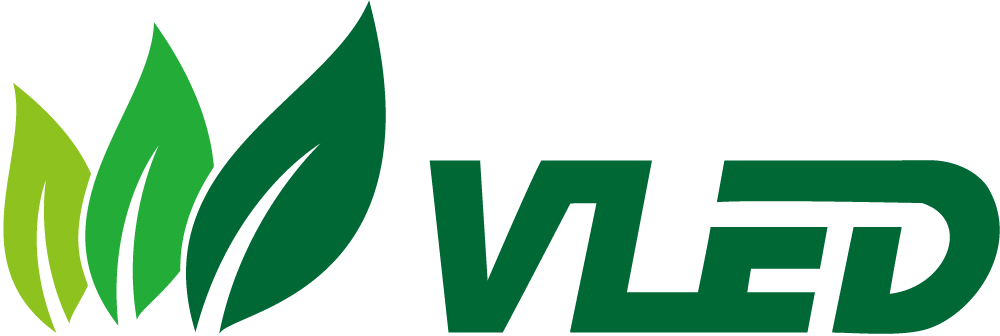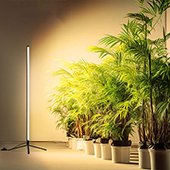Menu
Exploring Photosynthesis in Plants
Table of Contents
What is Photosynthesis?
Photosynthesis is a biochemical process in which plants, algae, and certain bacteria utilize light energy to convert inorganic substances, such as carbon dioxide and water, into organic compounds.
This process occurs within the chloroplasts of plant cells, where chlorophyll pigments, particularly chlorophyll a, capture the energy from sunlight and convert it into chemical energy.
In photosynthesis, carbon dioxide and water undergo a series of catalytic reactions within the chloroplasts, using light energy to synthesize organic molecules such as glucose and release oxygen.
The basic chemical equation for this process is as follows:
6CO2+6H2O+Light Energy→C6H12O6+6O26CO2+6H2O+Light Energy→C6H12O6+6O2
In this equation, carbon dioxide and water, catalyzed by chlorophyll, undergo photosynthesis to produce glucose and oxygen. Photosynthesis is one of the key processes in the conversion of energy for life on Earth, providing an energy source to sustain the diverse organisms within ecosystems.
Once we understand the principles of photosynthesis, we can explore the ideal light sources for plant growth.

Natural Light and Artificial Light
Natural sunlight is generally considered the most ideal light source for plant growth because the solar spectrum contains a rich variety of light energy, allowing plants to utilize different wavelengths for photosynthesis. Sunlight also provides a natural light cycle that contributes to the overall growth and development of plants.
A plant light is an artificial light source specifically designed to simulate natural sunlight and provide the necessary lighting conditions for plant growth indoors.
In some specific situations, plant lights can offer customized spectra and light cycles to promote better particular growth stages of plants, such as seedling growth, flower bud formation, or fruit maturation.
In indoor cultivation, vertical farms, or environments lacking natural light, plant lights can be an effective alternative.
What Color Light is Best for Plant Growth
The most suitable light colors for plant growth are typically blue light and red light.
In the spectrum, these two colors significantly impact photosynthesis and overall plant development.
Blue light promotes plant growth and development, especially during the seedling stage and the formation of the plant’s overall structure.
Red light plays a crucial role in the formation of flower buds and the ripening of fruits in plants.
Therefore, to promote comprehensive plant growth, providing a combination of blue and red light is a common strategy and is often incorporated into the spectrum design of many plant growth lights.
Common Types of Plant Lights
LED Lights: Provide a full spectrum similar to natural light, covering various wavelengths needed for plants at different stages, aiding in simulating sunlight.
Fluorescent Lights: Offer relatively even illumination, suitable for general plant growth needs, though typically requiring larger spaces.
High-Pressure Sodium Lights (HPS): Mainly emit orange-red light, showing good effectiveness in flower and fruit formation, commonly used during the flowering stage of plants.
Metal Halide Lights (MH): Primarily emit blue light, suitable for the early stages of plant growth, contributing to the healthy development of plants.
The Advantages of LED Glant Lights
In the field of indoor gardening and controlled environment agriculture, choosing the right light source is crucial for optimal plant growth.
Among various options, light-emitting diodes (LEDs) have emerged as a standout, offering an unparalleled combination of efficiency, versatility, and performance to promote plant growth.
High Energy Efficiency
Compared to traditional lighting sources such as incandescent bulbs, fluorescent lights, and high-pressure sodium lamps, the majority of electrical energy in LEDs is converted into active radiation for photosynthesis, which is the fundamental spectrum for plant growth.
This efficiency not only results in energy savings but also reduces heat generation, decreasing the need for additional cooling systems in cultivation spaces. This, in turn, helps maintain indoor temperatures and reduces the risk of plant damage due to overheating.
Full Spectrum
LED plant lights can provide the complete spectrum required by plants and can generate light within a customizable spectrum range.
LED systems can fine-tune the emission of specific wavelengths of light, such as blue light for promoting nutritional growth and red light for flower and fruiting stages.
This assists plants in receiving appropriate lighting conditions during different growth stages.
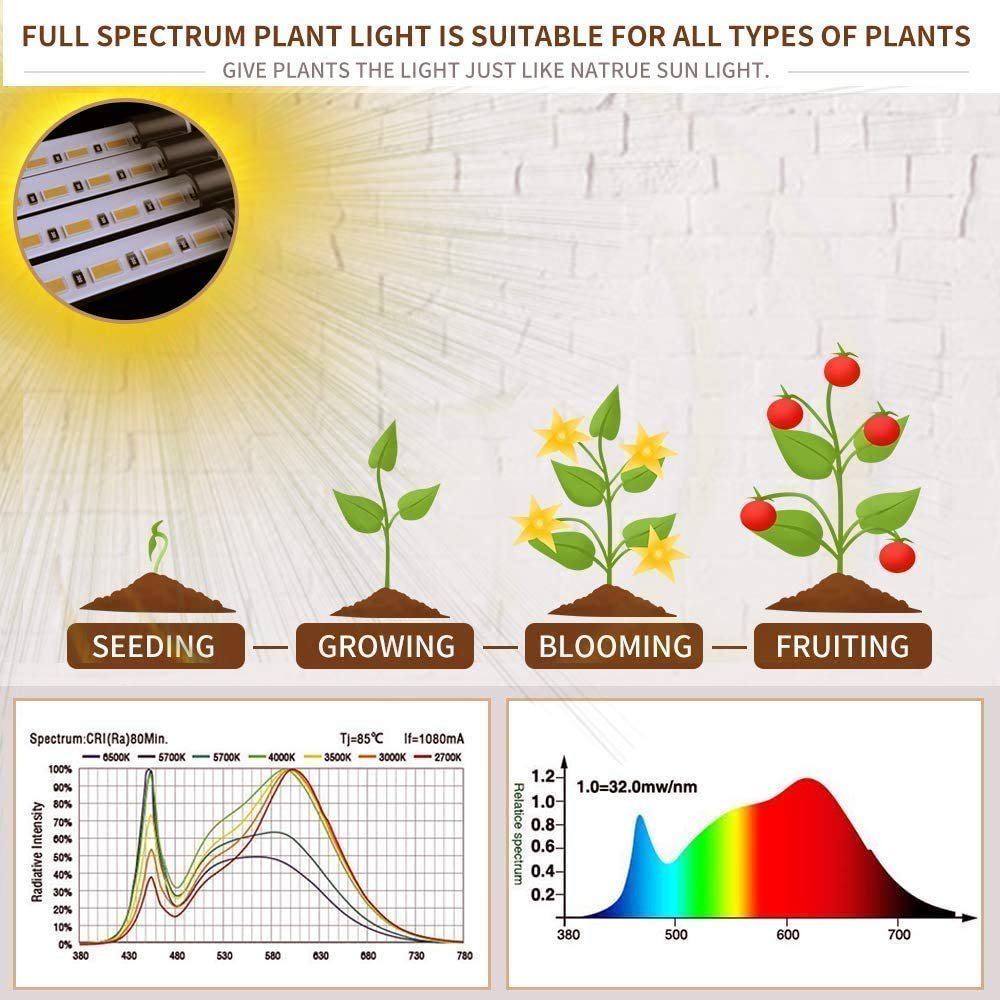
Durable and Compact
LEDs boast an average lifespan of tens of thousands of hours, far exceeding traditional light sources.
They can withstand environmental factors such as temperature fluctuations and vibrations, reducing the frequency of replacements, thus lowering maintenance costs and minimizing environmental impact.
Additionally, LED plant lights are often designed with a compact form, suitable for various planting environments, allowing for flexible installation and arrangement.
Intelligent Precision Control
LED plant growth lights are equipped with advanced control systems, offering precise adjustments not only in light intensity but also in duration and spectrum. This level of precision customization caters to various crops and growth stages.
This innovative technology empowers growers to intelligently tailor lighting conditions based on specific growth needs, such as nutrient absorption, bud development, or fruit maturation. Through automated control of the light environment, LED lights can provide optimal illumination at different stages.
From the micro-to-macro perspective, this intelligent control system opens up new possibilities in agricultural production, enhancing crop yield and quality while providing growers with greater flexibility and convenience.
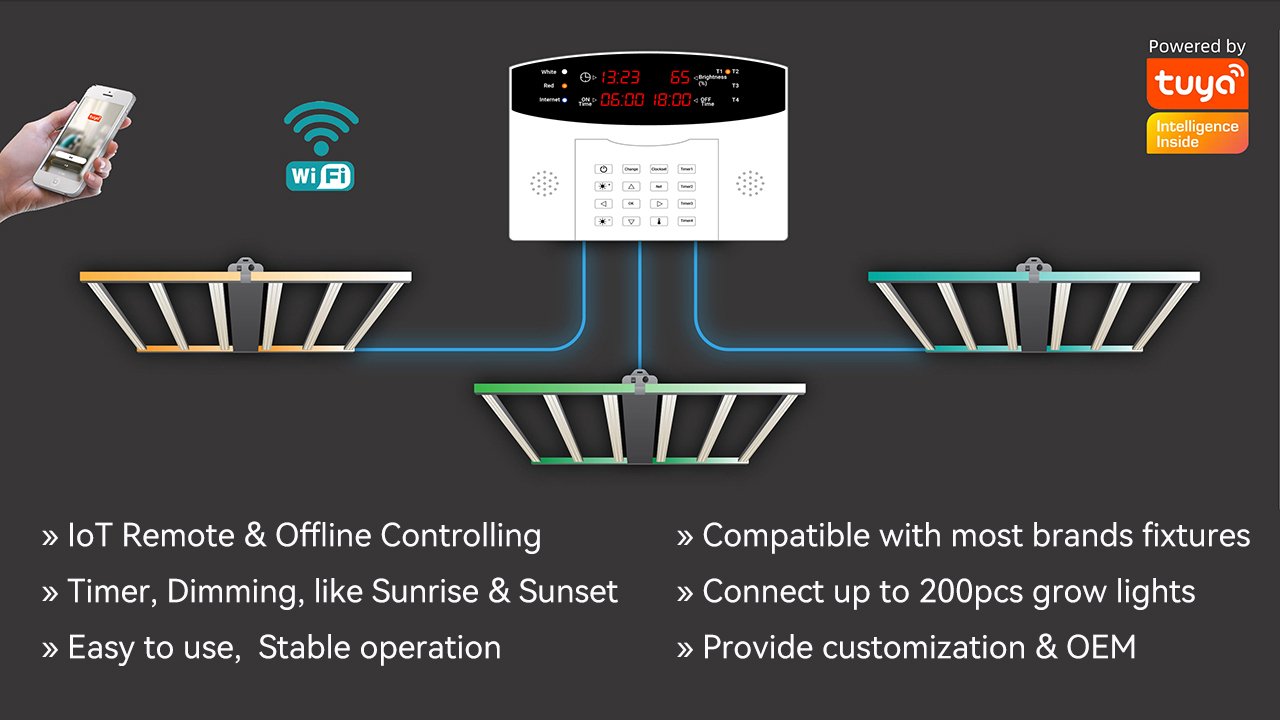
Environmentally Friendly
Unlike traditional light fixtures containing hazardous substances, LED plant lights do not contain harmful substances such as mercury.
Furthermore, the manufacturing and usage processes of LED lights result in lower carbon emissions. LEDs are mercury-free and fully recyclable, making them a more environmentally friendly option.
Practical Home Recommendation
The Gooseneck Grow Light is ideal for home plant cultivation, especially in environments lacking natural sunlight. Whether nurturing potted plants, cultivating an indoor garden, or tending to various stages of plant growth, this light can be your reliable assistant.
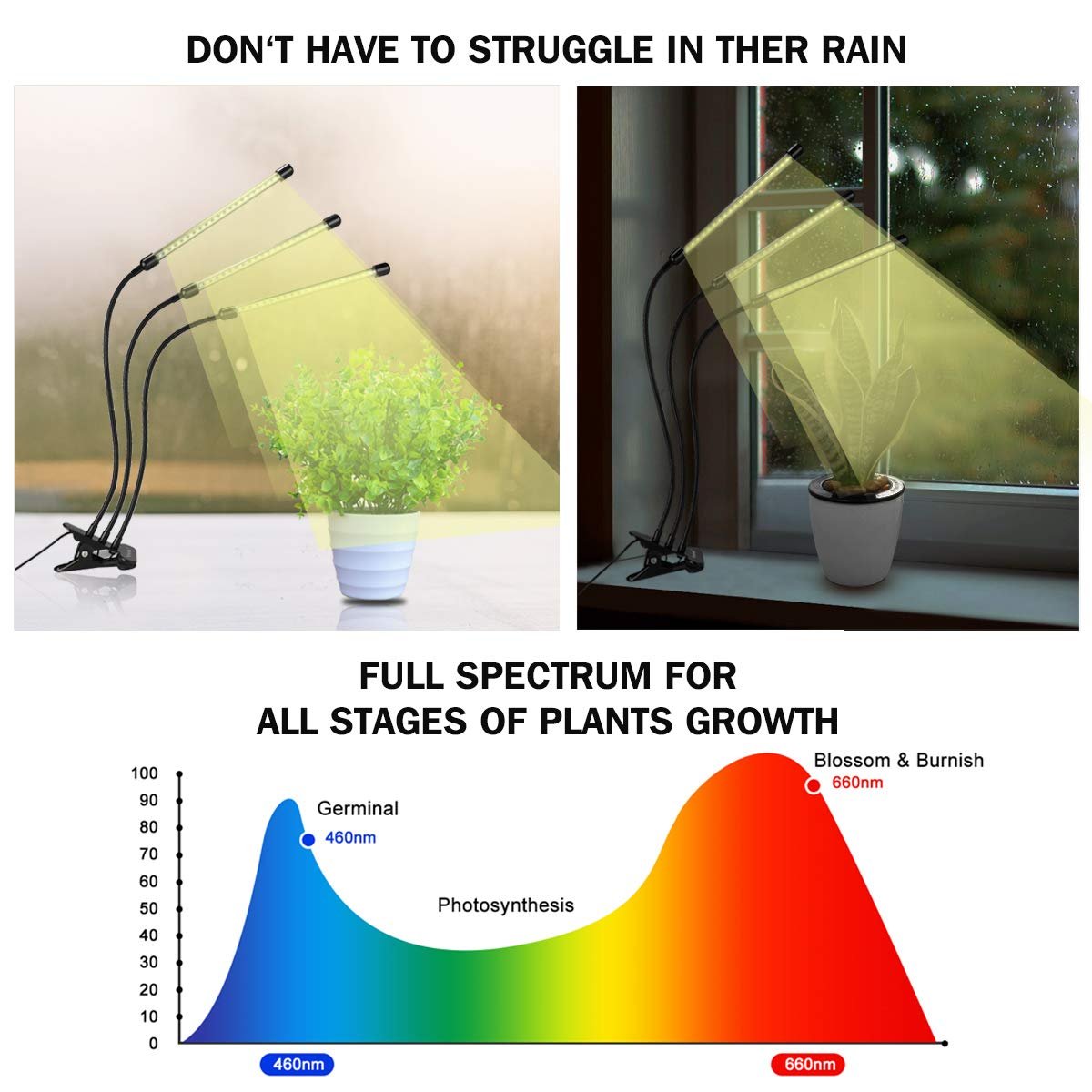
Lighting Characteristics
This light fixture is equipped with efficient LED light sources, capable of providing the full spectrum required for plant growth.
It includes not only the blue light that stimulates plant growth but also the red light that promotes flower and fruit development.
Through a scientifically designed spectrum, it achieves high energy efficiency, providing plants with abundant light while reducing energy consumption. The Gooseneck Grow Light creates an ideal growing environment for plants.
Appearance Design
The soft neck design of the Gooseneck Grow Light enables it to rotate and bend 360 degrees, easily adapting to the growth requirements of different plants.
Additionally, it is typically equipped with adjustable brightness and spectrum functions, allowing you to customize the optimal lighting conditions based on the growth stage of your plants.
Flexibility and Adjustability
The soft neck design of the Gooseneck Grow Light enables it to rotate and bend 360 degrees, easily adapting to the growth requirements of different plants.
Additionally, it is typically equipped with adjustable brightness and spectrum functions, allowing you to customize the optimal lighting conditions based on the growth stage of your plants.
Get in touch with us!
From custom light planning, to tailored quotes, and everything in between, our team of horticulture experts are always ready to assist.
